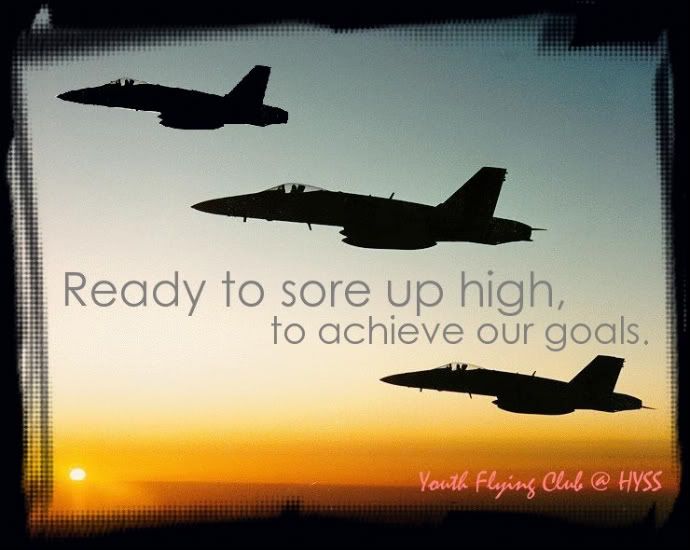? Friday, April 9, 2010 ' 11:08 AM
& ready to sore up high, to achieve our goals.

ASPIRING pilots at the Singapore Youth Flying Club (SYFC) will soon take to the skies in shiny new aircraft.
The club's 14 existing training aircraft, many already 20 years old, will be replaced in this major fleet overhaul, operations manager Willie Chow told The Straits Times.
SYFC is close to sealing a deal for 13 four-seater Diamond DA40s, he said. The aircraft would cost about US$3.4 million (S$4.8 million) in total at published prices.
The new aircraft should start arriving in the next few months.
Mr Chow said: 'This is our first major fleet replacement exercise in about two decades. Our trainer aircraft are put through extensive flying and they are getting old, so it is about time we retired them and gave our students more technologically advanced machines.'
Located in Seletar Aerospace Park, SYFC is one of three flying schools here, the other two being the Republic of Singapore Flying Club and Seletar Flying Club.
SYFC is the only one that caters solely to students. It admits Singapore citizens who are aged at least 16 and in junior colleges, polytechnics or schools offering the International Baccalaureate and Integrated programmes.
Students pay a nominal one-time fee of about $50 for books and other materials. It usually takes about a year's worth of lessons several times a week to obtain a private pilot's licence (PPL).
The club, funded mainly by the Ministry of Defence, opened in 1971 and to date, has trained more than 4,000 pilots. A good number of SYFC graduates go on to become Republic of Singapore Air Force (RSAF) or commercial pilots, said Mr Chow.
About 80 students are now pursuing their wings.
It is a month shy of a year since Nigel Wong, 17, started flying lessons; he has about two months to go before he gets his PPL.
Said the first-year science student at St Andrew's Junior College: 'I have always been interested in flying and intend to pursue a career in it. For me, joining the club is an important stepping stone to the RSAF.'
Apart from teaching youths how to fly, the SYFC runs a four-year aeromodelling programme as a co-curricular activity in secondary schools. The tie-up with the Education Ministry has already attracted 17 schools and about 800 students.
Those who enrol are taught the theory of aerodynamics through the building of planes using foam and balsa wood. They also get to fly these planes using wireless remote control.
Mr Chow said: 'We are not a commercial organisation. Our role is to train young people who are interested in flying, not just as a hobby but as a career.'
With new aircraft coming in, the club expects to attract even more students, he said.
Nigel said: 'It is a shame I will not be here when the new trainers come, but it is definitely good news for future graduates.'


